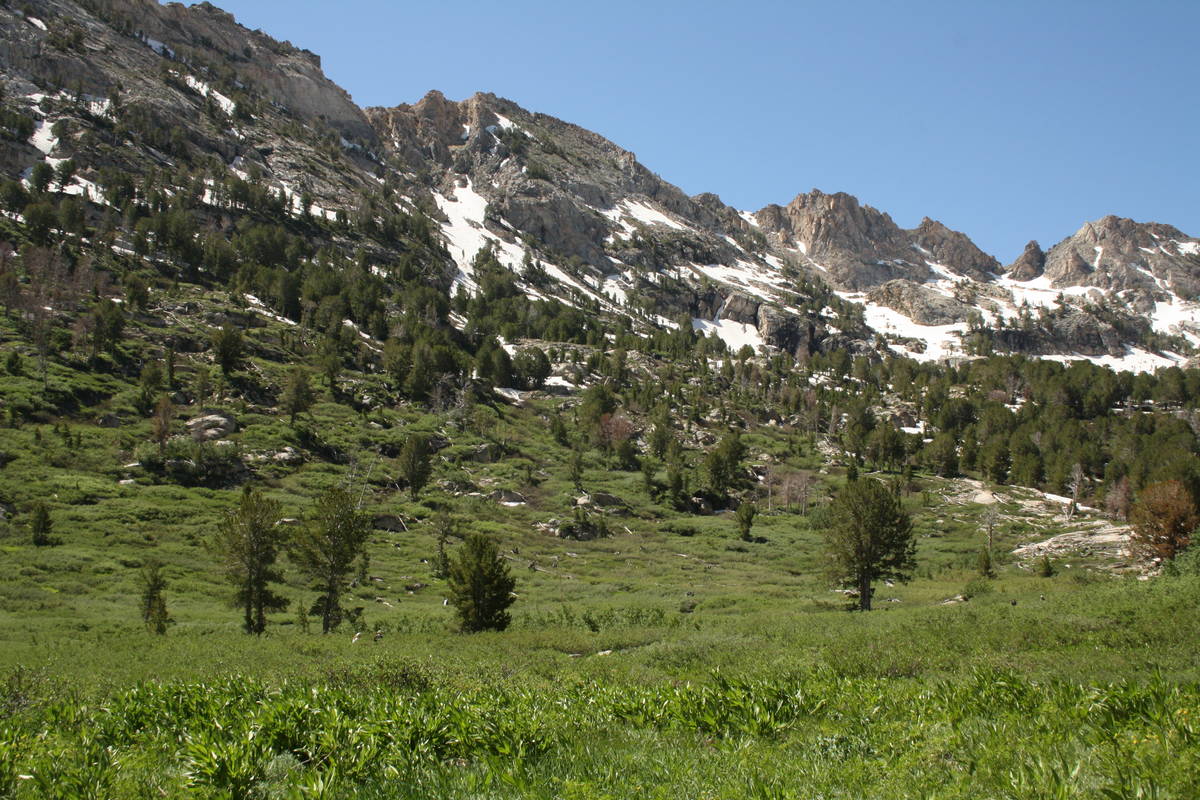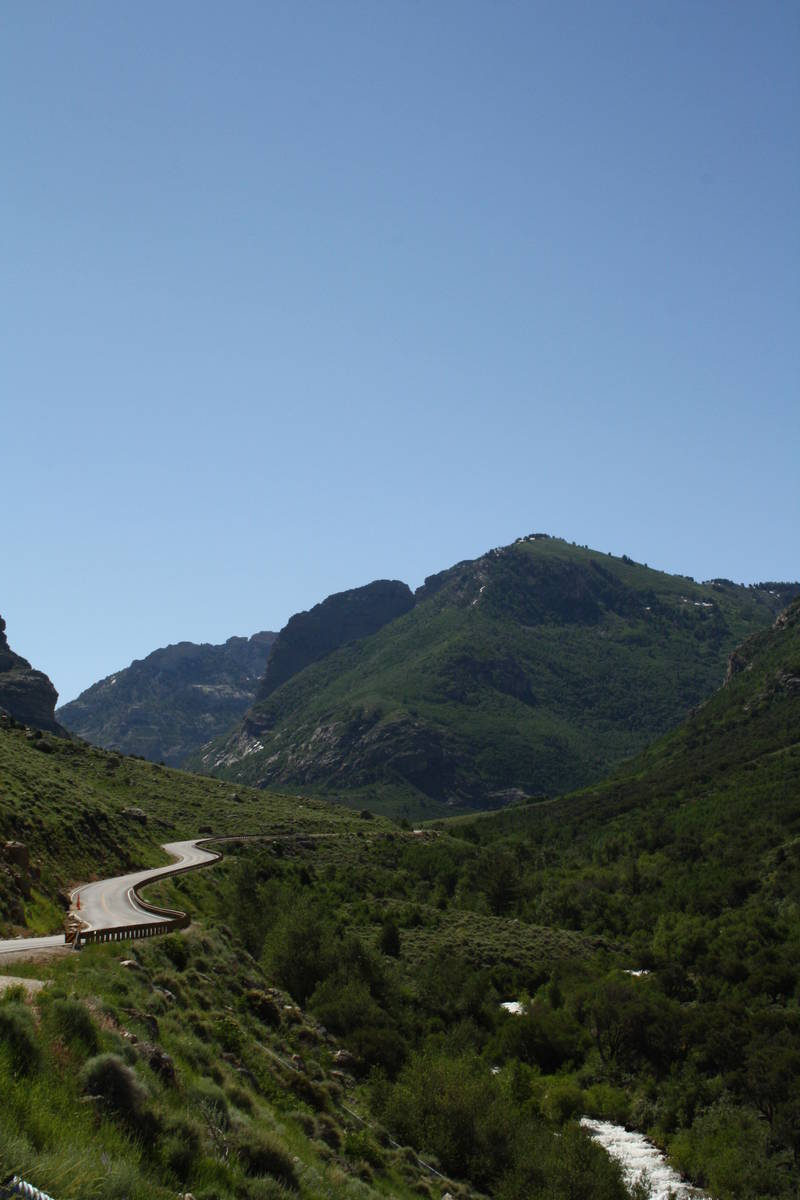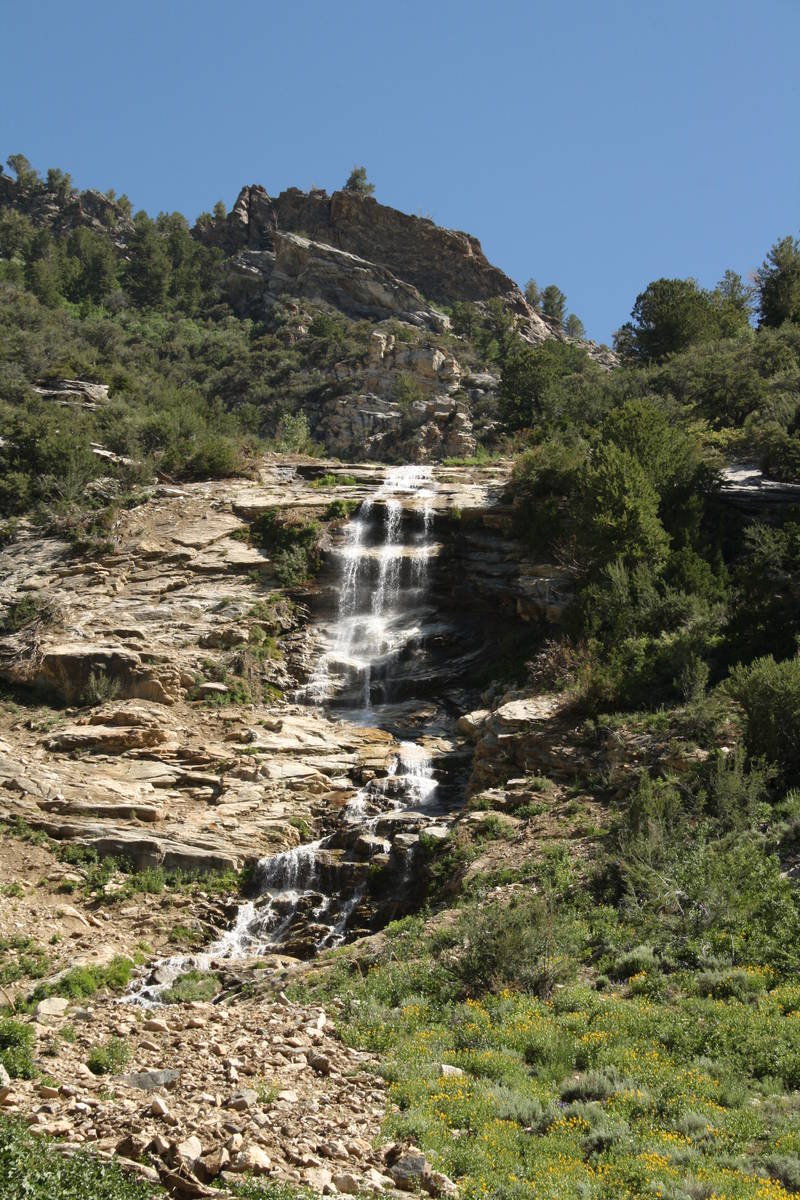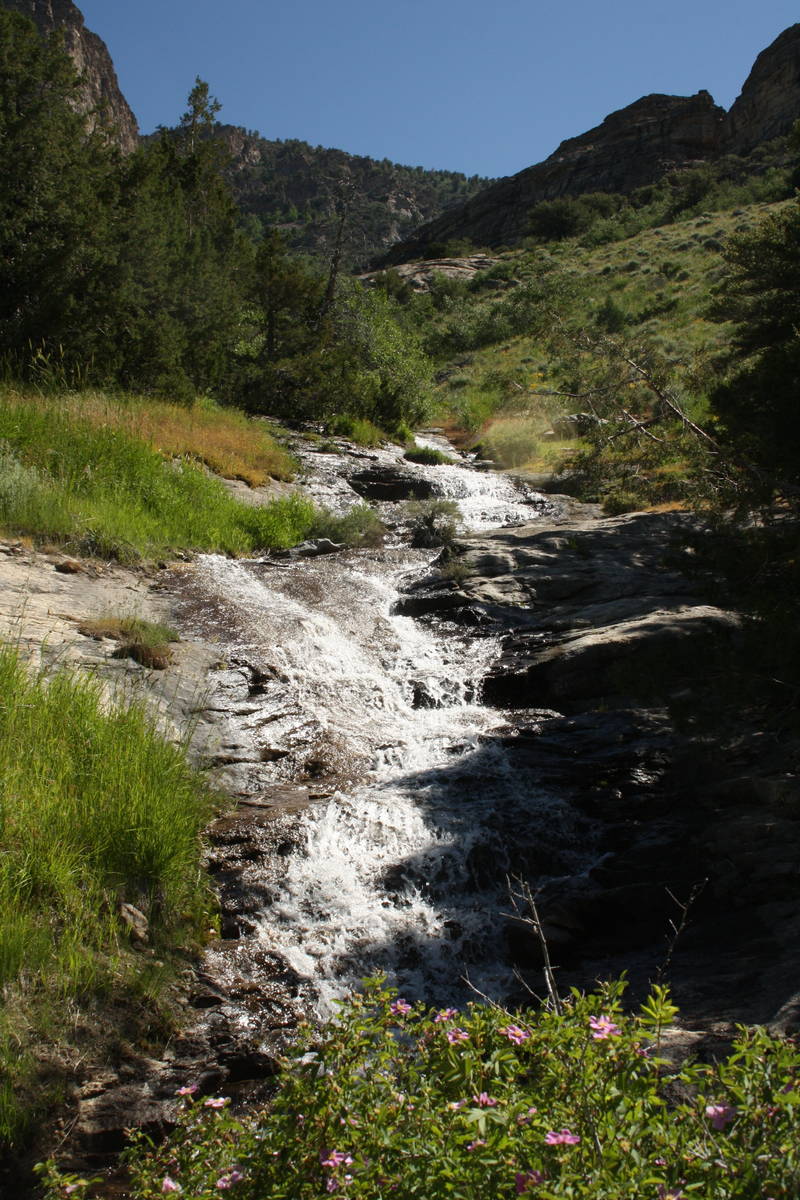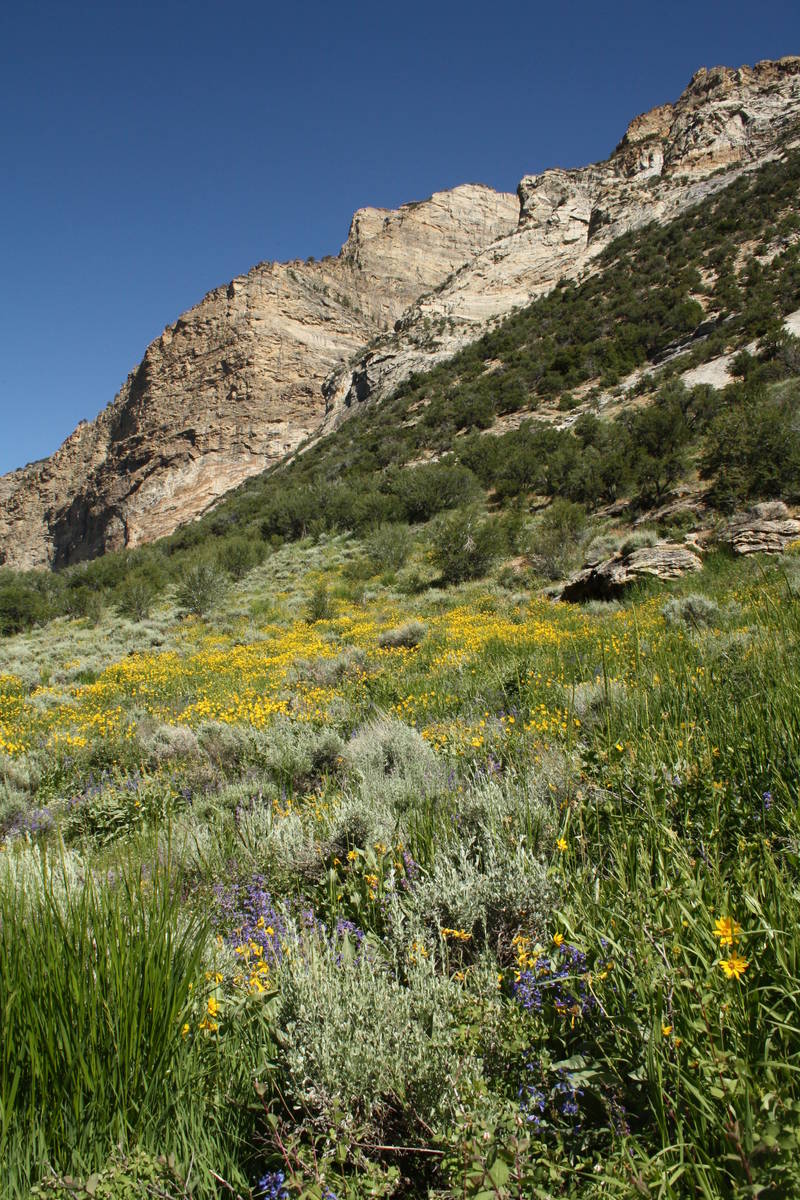Scenic Ruby Mountains live up to billing as ‘Nevada’s Alps’
Locals have dubbed the spectacular Ruby Mountains “Nevada’s Alps,” and for good reason.
Majestic and unlike any other place in the state, this region is home to alpine lakes, waterfalls, cascades, avalanche chutes and running streams. In early summer, you’ll also find a plethora of wildflowers.
The Ruby Mountains are in the 450,000-acre Ruby Mountain Ranger District, where elevations range from about 6,000 feet to 11,387 feet at Ruby Dome. The district includes the East Humboldt Range.
Visitors can easily access the Ruby Mountains via the 12-mile Lamoille Canyon National Scenic Byway, starting 18 miles southwest of Elko. The drive up the canyon is open only in summer because of heavy snow the rest of the year. The Rubys typically receive 6 to 10 feet of snow yearly. Even in summer you will most likely find patches of snow, especially at Road’s End.
Along the Scenic Byway, there are many places to stop and take photographs and enjoy a hike. A 1.5-mile nature trail begins at Terraces Campground. The 4-mile Thomas Canyon Trail leaves from the Thomas Canyon Campground. Once you reach the parking area at Road’s End at an elevation of 8,800 feet, you’ll find other trailheads. Lamoille Lake makes a great destination for the day. It’s a moderately steep 3.4-mile round-trip hike with an elevation gain of 990 feet.
If you’re looking for one of the best backpacking trips in Nevada, you could tackle the 34-mile Ruby Crest National Recreation Trail. It’s quite a strenuous hike with undulating terrain, but the rewards are great as it’s very remote and travels through some of the country’s most stunning scenery. It’s usually done as a three-to-four-day point-to-point backpack trip from Road’s End south to Harrison Pass.
The Ruby Mountains are home to a wide variety of wildlife, including many animals you might not expect to find in Nevada. There are Rocky Mountain goats, Rocky Mountain bighorn sheep, pronghorns, beavers, porcupines and even the Himalayan snowcock, an exotic bird that was introduced here between 1963 and 1979. There are no bears in the Rubys.
Mountain weather can be unpredictable, and in late summer, watch out for afternoon thunderstorms. Average daily high temperatures in summer are in the 80s.
Wear appropriate shoes for rocky and possibly muddy conditions. A hat and sunscreen are essential for sunny days at such high altitude; warm fleece, a waterproof shell and gloves come in handy, especially when hiking in the cool mornings.
Bring all your own food and water for day trips, and don’t count on cellphone service.



